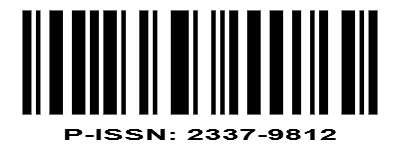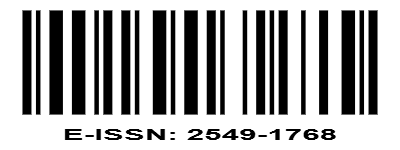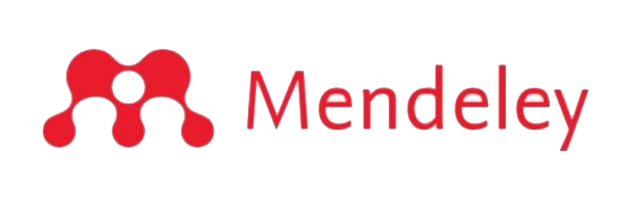MEMBERDAYAKAN KEMAMPUAN BERPIKIR MAHASISWA MELALUI MODEL PEMBELAJARAN READING QUESTIONING AND ANSWERING (RQA)
DOI:
https://doi.org/10.22373/biotik.v2i1.2511Keywords:
Model RQA, Kemampuan Berpikir dan Menyusun PertanyaanAbstract
This study aimed at figuring out the increase of student thinking skills through the preparation of questions. The population of the research was all of four-semester students of Biology Department of Teacher Training and Education (Tarbiyah) Faculty of IAIN Ar-Raniry in academic year 2012/2013. The sample then selected 29 students. The method used was experimental research. The researcher taught by using Questioning Reading and Answering learning model. Students are asked to read the course topic and then prepare substantial questions from the reading. The assigned materials were Bryophyta and Pteridophyta. The test of thinking skill followed the rubric of knowledge dimensions and cognitive process dimensions of Anderson and Karthwohl. The results showed an increase in thinking ability of students toward the higher level thinking ability. Thus the application of the Reading Questioning and Answering model can improve thinking ability of students in Botany Cryptogamae course.Downloads
References
Santyasa, I.W. 2008. Pembelajaran Berbasis Masalah dan Pembelajaran Kooperatif. Makalah: Disajikan dalam Pelatihan tentang Pembelajaran dan Asesmen Inovatif bagi Guru-Guru Sekolah Menengah di Kecamatan Nusa Penida, tanggal 23-24 Agustus 2008.
Huitt, William G., 1997. Metacognition. Available: http://tip.psychology.org/- meta.html. diakses, 5 Maret 2011.
Zubaidah, S. 2010. Berpikir Kritis: Kemampuan Berpikir Tingkat Tinggi yang Dapat Dikembangkan melalui Pembelajaran Sains. Makalah Seminar Nasional Sains. Surabaya: Pascasarjana Unesa.
Irani, T., Rudd, R., Gallo, M., Ricke_ s, J., Friedel, C., & Rhoades, E. 2007. Critical thinking instrumentation. manual. University of Florida.
Corebima, A. D. 2010. Berdayakan Keterampilan Berpikir Selama Pembelajaran Sains Demi Masa Depan Kita. Makalah. Disampaikan pada Seminar Nasional Sains, yang diselenggarakan di Universitas Negeri Surabaya, 16 Januari 2010.
Halpern, D.F., 1996. Thought and knowledge: An introduction to critical thinking. Mahwah, NJ: Lawrence Erlbaum Associates.
Kuswana, Sunaryo, W. 2011. Taksonomi Berpikir. Bandung: PT. Remaja Rosdakarya.
Murti, Bh. 2010. Berpikir Kritis (Critical Thinking). Bagian Ilmu Kesehatan Masyarakat, Fakultas Kedokteran UNS, Solo.
Corebima, A. D. 2009. Pengalaman Berupaya Menjadi Guru Profesional. Pidato Pengukuhan Guru Besar pada FMIPA UM. Disampaikan pada Sidang Terbuka Senat UM, tanggal 30 Juli 2009. Malang: UM.
Wade, C. 1995. Using writing to develop and asses critical thinking. Teaching of Psychology, 22 (1)24-28.
Anderson L.W., and Krathwohl D.L., (2001). A Taxonomy for Learning, Teaching, and Assesing. a Revision of Blomm’s Taxonomy of Educational Objectives. Addison Wesley Longman, Inc. United States.
Moore, B. N. dan R. Parker. 1986. Critical Thinking. California: Mayfield Publishing Co.
Hasanuddin. 2013. Pengaruh Pembelajaran Reading Questioning and Answering dipadu Think Pair Share Berbasis Lesson Study Terhadap Ketrampilan Metakognisi dan Hasil Belajar Kognitif Mahasiswa Pada Matakuliah Anatomi Tumbuhan. Disertasi. Tidak Dipublikasi. Malang: Program Pascasarjana Universitas Negeri Malang.
Hasanuddin dan Mulyadi. 2012. Meningkatkan Kemampuan Berpikir Kritis Mahasiswa melalui Strategi RQA. Prosiding Seminar Nasional FKIP Universitas Sebelas Maret Solo, Tanggal 17 april 2012. Hal. 70-76.
Downloads
Published
Issue
Section
License
Authors who publish with BIOTIK: Jurnal Ilmiah Biologi Teknologi dan Kependidikan agree to the following terms:
- Authors retain copyright and grant the journal right of first publication with the work simultaneously licensed under a Creative Commons Attribution License that allows others to share the work with an acknowledgement of the work's authorship and initial publication in this journal.
- Authors are able to enter into separate, additional contractual arrangements for the non-exclusive distribution of the journal's published version of the work (e.g., post it to an institutional repository or publish it in a book), with an acknowledgement of its initial publication in this journal.
- Authors are permitted and encouraged to post their work online (e.g., in institutional repositories or on their website) prior to and during the submission process, as it can lead to productive exchanges, as well as earlier and greater citation of published work.











